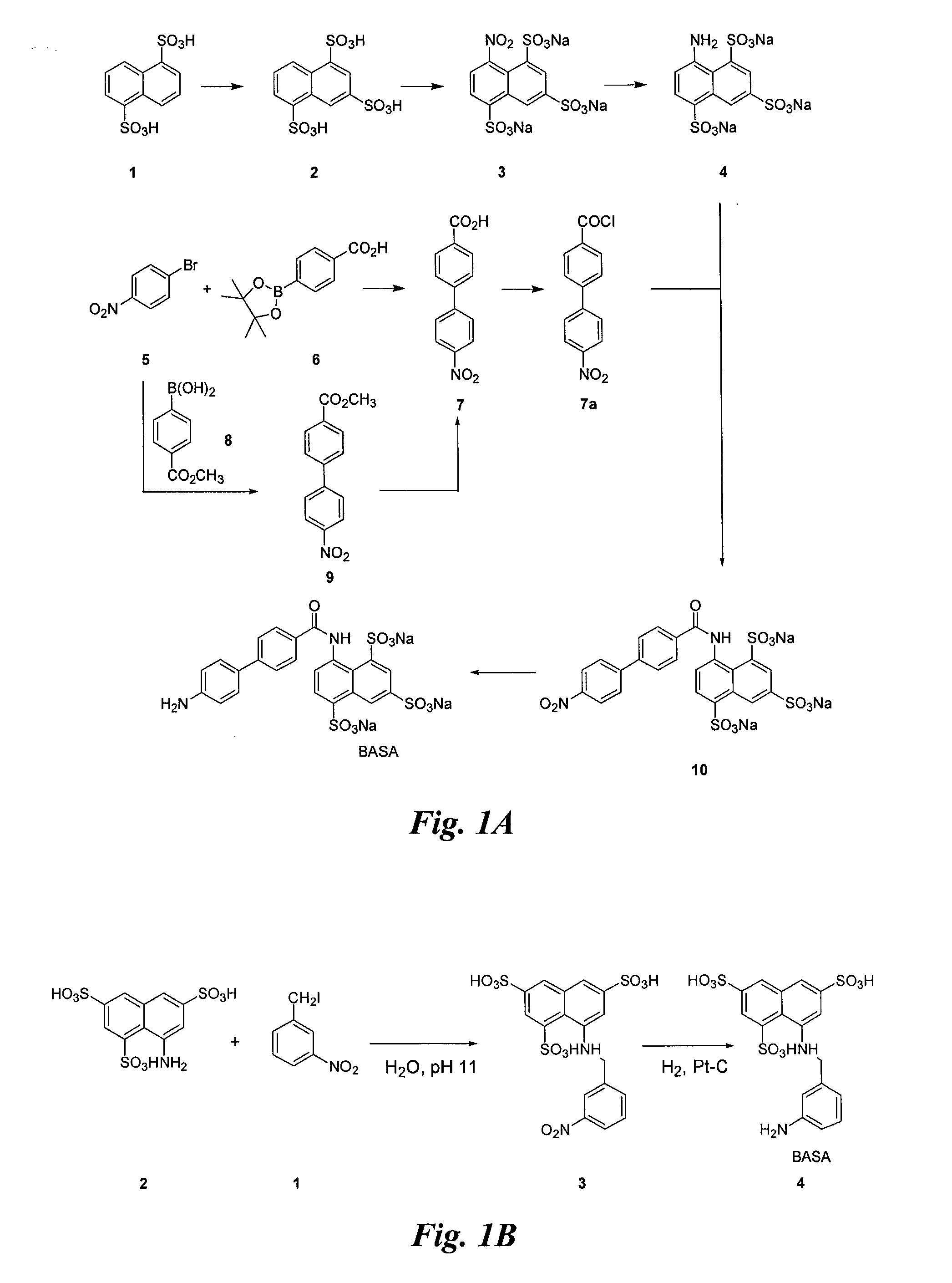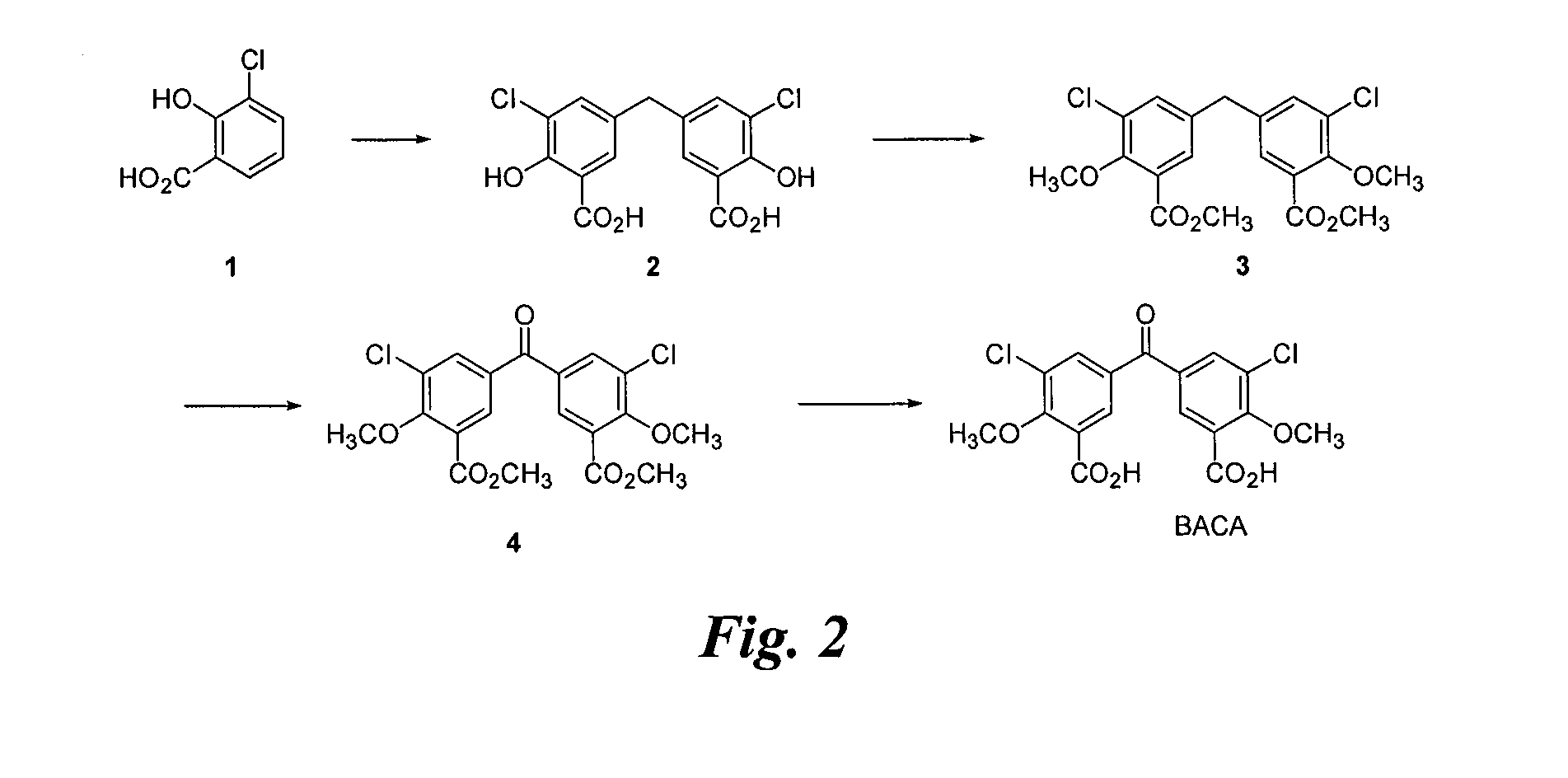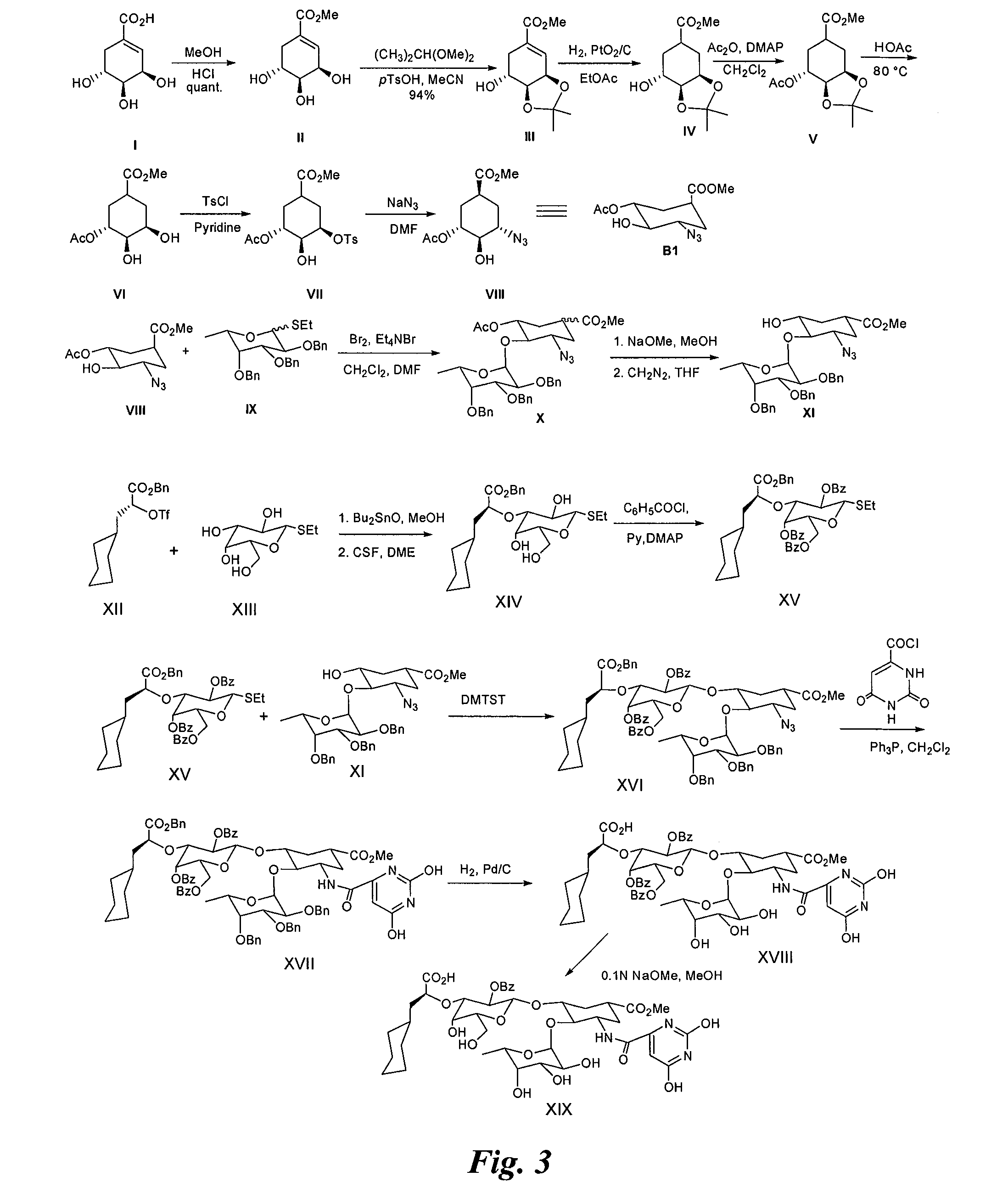Heterobifunctional pan-selectin inhibitors
a selectin inhibitor and heterofunctional technology, applied in the field of compounds, can solve the problems of tissue damage instead of repair, unsuitable for drug development,
- Summary
- Abstract
- Description
- Claims
- Application Information
AI Technical Summary
Benefits of technology
Problems solved by technology
Method used
Image
Examples
example 1
Synthesis of BASA (FIG. 1A)
[0116]Synthesis of compound 4: Nitration of commercially available 2 (1 g) is according to the procedure described (for literature conditions see U.S. Pat. No. 4,534,905; Allison, F. et al. Helv. Chim. Acta 4:2139 (1952)).
[0117]The crude product 3 is dissolved in water (40 mL) and 10% Pd / C (0.3 g) added. The mixture is hydrogenated (˜45 psi) at room temperature for 48 h. The catalyst is filtered through Celite and the filter bed is washed with water. The filtrate is concentrated under vacuum to afford a pink solid. After removal of the catalyst, the filtrate is concentrated to 15 mL and an equal volume of ethanol is added. The precipitate is collected by filtration to give compound 4 with very little impurity.
[0118]Synthesis of compound 7a: A solution of 5 (5 g) and 8 (4.45 g, 24.7 mmol), and K2CO3 (2 M in H2O, 24.7 mL, 49.4 mmol) in 10:1 toluene / ethanol (70 mL) is treated with Pd(PPh3)4 (1.43 g, 1.24 mmol) and the mixture is refluxed for 20 h. After work ...
example 2
Synthesis of BASA (FIG. 1B)
[0123]Synthesis of compound 4: 3-nitro-benzyl iodide (1) (48.3 g) is added to an aqueous solution (pH 11) of commercially available, 8-aminonaphthalene-1,3,5-trisulfonic acid (2) (29.5 g) with stirring at room temperature. pH of the solution is adjusted to 1 and after evaporation of the solvent, the product 3 (6.4 g) is precipitated out from ethanol.
[0124]Platinum catalyzed hydrogenation of compound 3 affords compound 4 (the BASA of FIG. 1B) in 96% yield.
example 3
Synthesis of BACA (FIG. 2)
[0125]A suspension of 1 (8.9 g), paraformaldehyde (8.9 g), and H2SO4 (125 mL) is heated to 90° C. for 14 h and affords crude 2 (7.8 g) after work up. The crude product is 77% pure by HPLC and characterized by 1H NMR.
[0126]To a solution of 2 (1.0 g) in acetone (30 mL) is added K2CO3 (3.1 g) and dimethylsulfate (1.4 mL) and the reaction is heated to reflux for 24 h. The reaction is combined with the next batch for work up and purification.
[0127]To a solution of 2 (7.5 g) in acetone (225 mL) is added K2CO3 (23.2 g) and dimethylsulfate (10.8 mL) and the reaction is heated to reflux for 16 h. The reaction, combined with the previous batch, affords 3 (7.3 g, 74%) after work up and column chromatographic purification (ethyl acetate / heptane 1:9). The product is 80% pure by HPLC and characterized by 1H NMR.
[0128]Chromic anhydride (6.94 g) is added to a suspension of 3 (7.16 g) in acetic anhydride (175 mL) at 3° C. and then stirred at room temperature for 15 h. The r...
PUM
 Login to View More
Login to View More Abstract
Description
Claims
Application Information
 Login to View More
Login to View More - R&D
- Intellectual Property
- Life Sciences
- Materials
- Tech Scout
- Unparalleled Data Quality
- Higher Quality Content
- 60% Fewer Hallucinations
Browse by: Latest US Patents, China's latest patents, Technical Efficacy Thesaurus, Application Domain, Technology Topic, Popular Technical Reports.
© 2025 PatSnap. All rights reserved.Legal|Privacy policy|Modern Slavery Act Transparency Statement|Sitemap|About US| Contact US: help@patsnap.com



